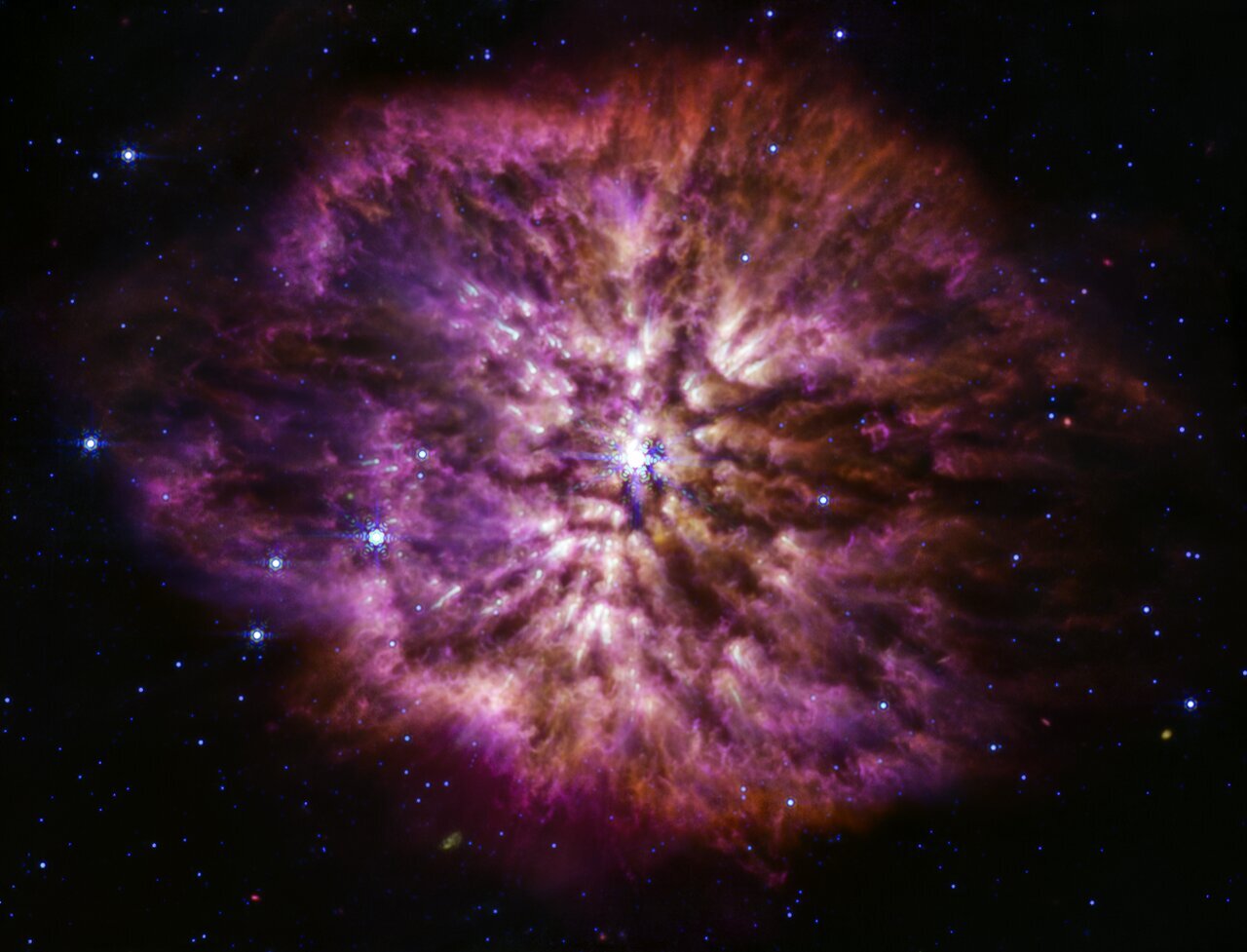One of the most amazing photos taken by the James Webb Space Telescope shows us the Wolf-Rayet star WR 124. This giant star is surrounded by a very beautiful nebula and is preparing to explode as a supernova.

Amazing photo by James Webb
One of the most amazing images obtained by the James Webb Space Telescope shows the Wolf-Rayet star WR 124 with incredible accuracy. The photo shows not only a giant luminary ending its existence, but also the multicolored nebula surrounding it.
Some of the most massive luminaries turn into Wolf-Rayet stars at the end of their existence. When they run out of hydrogen fusion fuel, they begin to process helium and their temperature rises greatly. Therefore, an extremely powerful stellar wind arises, which carries material from the outer layers into space.
So a small nebula is formed around the star, which continues to exist before the star bursts into a supernova. After that, all the gas and dust dissipate in space and give rise to a new generation of stars.
Wolf-Rayet stars are very interesting to scientists because they are a kind of window into the past. It is in them that a large number of elements heavier than helium are formed. At the beginning of the Universe there were much more such objects than now, and it was they who filled it with those matters that made possible the existence of the Earth and humanity on it.
Wolf-Rayet Star WR 124 in pictures by James Webb
But the new picture of the Wolf-Rayet star WR 124 strikes not with the secrets of what process it is the result of, but with incredible beauty. This star has a mass 30 times that of the sun and is located 15 thousand light-years away from us.
Its nebula in the picture looks like an amazing cloud of yellow, pink and purple. In some places, small dark areas are scattered around it. And below, the branches of the cloud resemble a flock of tadpoles.
There are zones where the star blows out clumps of bright hot material, similar to how the hair flutters behind someone who stands in front of a fan. All this is possible to see thanks to the use of two instruments that are on board the space observatory: the main near-infrared camera NIRCam and the mid-infrared detector MIRI.
According to phys.org.
Follow us on Twitter to get the most interesting space news in time
https://twitter.com/ust_magazine

